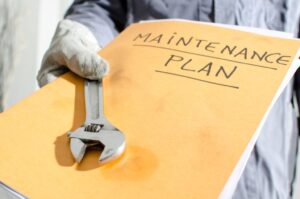
The Cheeky Monkey Media Blog
A few words from the apes, monkeys, and various primates that make up the Cheeky Monkey Super Squad.

How to Avoid Common Website Maintenance Mistakes
October 27, 2022Websites are a crucial part of any business. They are often the first point of contact between a company and its customers. A well-maintained website can be a powerful marketing and sales tool, while a poorly maintained website can damage a company’s reputation and lose customers.
Unfortunately, website maintenance is often neglected. It’s easy to understand why – it’s not as sexy as website design or development, and it can be difficult to find the time and resources to do it properly. However, neglecting website maintenance can have serious consequences.
Here are some common mistakes that companies make when it comes to website maintenance and how to avoid them:
1. Not Having a Maintenance Plan
One of the most common mistakes companies make is not having a plan for website maintenance. Just like any other business activity, website maintenance needs to be planned and organized.
Without a plan, it’s easy for website maintenance to fall through the cracks. Important updates will be missed, and small problems will turn into big ones.
To avoid this, create a website maintenance plan. This doesn’t need to be complicated – a simple document outlining who is responsible for what, when updates should be made, and how often the website should be checked for problems is usually sufficient.
2. Not Keeping the Content Up-to-Date
Another common mistake is not keeping the content on the website up-to-date. Over time, information on the website will become outdated, inaccurate, or simply irrelevant. This can damage your company’s reputation and make it difficult for customers to find the information they need.
To avoid this, create a process for regularly reviewing and updating the content on your website. Depending on the type of website, this could be done monthly, quarterly, or even annually.
3. Not Checking for Broken Links
Links on your website can become broken for a variety of reasons – websites change, pages are moved or renamed, and so on. If left unchecked, broken links can frustrate users and damage your company’s reputation.
To avoid this, create a process for regularly checking for broken links. There are a number of tools that can help with this, such as Screaming Frog or SEMrush.
 4. Not Monitoring the Website for Security Issues
4. Not Monitoring the Website for Security Issues
Security is a crucial part of website maintenance. If your website is hacked, it could jeopardize the safety of your customer’s data and damage your company’s reputation.
To avoid this, create a process for monitoring your website for security issues. There are a number of tools that can help with this, such as Sucuri’s SiteCheck or Wordfence.
5. Not Backing Up the Website
Backing up your website is an important part of website maintenance. If something goes wrong, such as a server crash or a hacking attack, you’ll be glad you have a backup.
To avoid this, create a process for regularly backing up your website. There are a number of tools that can help with this, such as UpdraftPlus or VaultPress.
6. Not Knowing How to Restore the Website
Backing up your website is only half the battle – you also need to know how to restore it. If you don’t have a plan for restoring your website from a backup, you could be in for a long and difficult process.
To avoid this, create a process for regularly testing your website backups. This will ensure that you know how to restore your website if something goes wrong.
7. Not Keeping the Software Up-to-Date
One of the most important parts of website maintenance is keeping the software up-to-date. This includes the content management system (CMS), the theme, and all plugins and extensions.
Outdated software is one of the biggest security risks for websites. Hackers know how to exploit old software, and they often target websites that haven’t been updated.
To avoid this, create a process for regularly checking for and installing updates. Depending on the software, this could be done manually or automatically.
8. Not Monitoring the Website for Performance Issues
Performance issues can have a major impact on your website and can lead to a decline in traffic and conversions.
To avoid this, create a process for regularly monitoring your website for performance issues. There are a number of tools that can help with this, such as Google’s PageSpeed Insights or Pingdom’s Website Speed Test.
9. Not Having a Disaster Recovery Plan
No matter how well you plan and how carefully you maintain your website, there’s always a chance that something will go wrong. That’s why it’s important to have a disaster recovery plan in place.
A disaster recovery plan is a document that outlines how to deal with a major website outage. It should include instructions on restoring the website from a backup, communicating with customers and stakeholders, and preventing the same problem from happening again.
10. Not Testing the Disaster Recovery Plan
A disaster recovery plan is only as good as its execution. You need to test your disaster recovery plan to know if it’s effective.
To avoid this, create a process for regularly testing your disaster recovery plan. This could be done quarterly, semi-annually, or annually.
Conclusion
Website maintenance is often neglected, but it’s a crucial part of running a website. By avoiding these common mistakes, you can ensure that your website is well-maintained and running smoothly.
Need professional help? Contact the monkeys at [email protected] or call 1.888.824.3359

 4. Not Monitoring the Website for Security Issues
4. Not Monitoring the Website for Security Issues